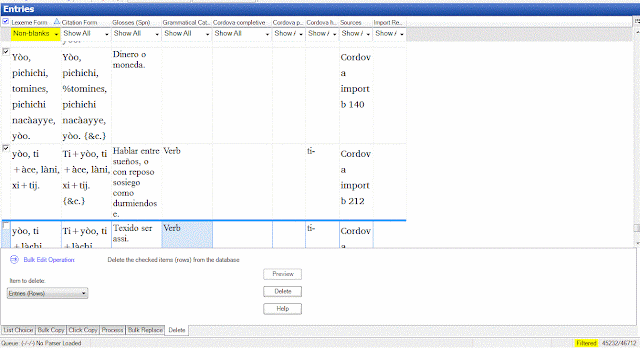I am trying to learn Farsi this summer for one of our research projects.
I've been exploring two online language learning systems. One is Headstart2, developed by the military for soldiers. But it seems that anyone can register and use the system for free.
Some features for Headstart2
The second system is Mango . My library system has a subscription for patrons.
I've been exploring two online language learning systems. One is Headstart2, developed by the military for soldiers. But it seems that anyone can register and use the system for free.
Some features for Headstart2
- In each unit, there is an initial vocabulary introduction section, then a subsequent group of exercises in increasing difficulty that involve using this vocabulary.
- For example, in the following screenshot, the system is helping the user learn words that describe people, such as 'old', 'fat', 'man', 'blonde', 'tall', etc.
The question at the bottom asks "Who is the short man?" The pictures alone are often enough to answer, but the text underneath the first picture ("Amir is short") also helps, especially when it is not completely obvious from the picture.
- Some tasks can be rather complex, as in the following screen, where you need to be able to read the names of cities, days, and times in order to find the right flight.
Some likes and dislikes:
- You can always go back and forth in the lessons to double check vocabulary.
- You can play sound clips of all the words
- The system also teaches you to read the Farsi alphabet
- The lessons get complex fairly quickly. I think it might be a bit overwhelming for some users.
- There is a link for a 'glossary', but this doesn't work for me. So there is no single place that all the vocabulary is collected
- There are tests at the end of each chapter, so you can check your progress.
Mango has a simpler rotation of activities. It is always along the lines of
English1 --- Farsi1
English1 --- ?
where at the prompt, you are supposed to say the Farsi word. The system is based on a spaced repetition model, so it is similar overall to Pimsleur, but it presents the material in both written and audio form.
Here is a sample screenshot
If you mouse over the words, you can see their transcription or play any word individually. The play button at the left plays the whole thing.
The general approach for each section is to present a long phrase, then break it apart into constituent parts, drill each separately (interleaving them), then recombine them into the whole phrase at the end of the section.
Likes and dislikes
- As with Headstart2, there is no central vocabulary that collects all the words.
- All the words are presented in Farsi orthography. Since I know how to read this alphabet, this works for me. But I also tried a little of the Mandarin course, and without knowing any characters, it was much, much more difficult to do the lessons. (Essentially it then works without any readable written portion, if you exclude the mouse-over transcriptions.)
- The variety of tasks is low.
A possible weakness of both programs -- I see drilling/repetition of words within a chapter. But once you've left the chapter on colors (for instance), the color words don't seem to reappear in the subsequent chapters, so it would be easy to forget them.
Both systems are far advanced above what is available for the endangered languages I know. Would it be possible for one of these authoring systems to be made available to people working on small/endangered languages?
I know that Rosetta Stone is working with Navajo and Chitimacha on language preservation and revitalization projects. Unfortunately, I don't have access to their product on Farsi for a comparison to the other two.



















